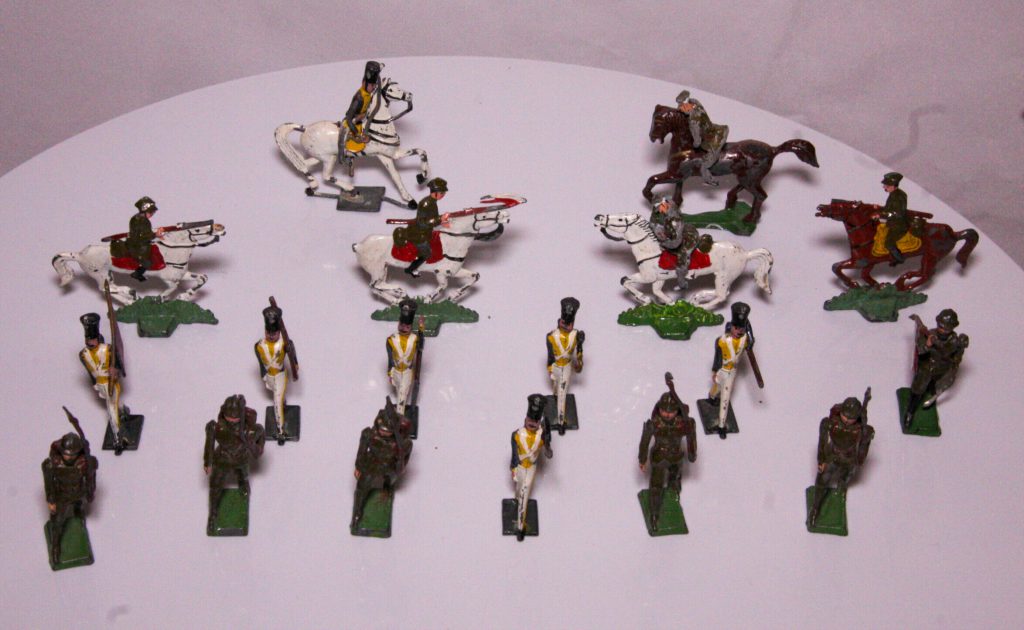
Imagine you had to leave your home, relocate to a new country, and could only bring a very small number of your belongings with you. What would you take? For Michael Alfred Peszke, the answer was his toy soldiers. Born in Deblin (eastern Poland) in 1932, Peszke immigrated to the United States with his mother shortly after the outbreak of World War II. These tin figurines traveled with him throughout the entire journey to his new home, zigzagging through Europe, crossing the Atlantic, and finally arriving in America. The young boy who fled the precarious situation in Poland eventually studied medicine, became a psychiatrist, and settled in Connecticut.
Toy soldiers were first made from tin, lead and composite starting in the 1700s, but were not mass produced until the Industrial Revolution. This meant such figurines were luxury items in their early years, available only to the wealthy. The first mass-produced–and therefore more affordable–toy soldiers were manufactured in Germany in the early 1800s. The industry was later dominated by British manufacturers due to William Britain’s invention of hollow-casting, which created a lighter and cheaper product. The production of toy soldiers and other non-essential goods was interrupted by the outbreak of World War II and the shift to major munitions production in European countries.
Author: Marie Diemand, History major, Elms College.